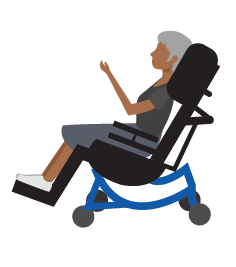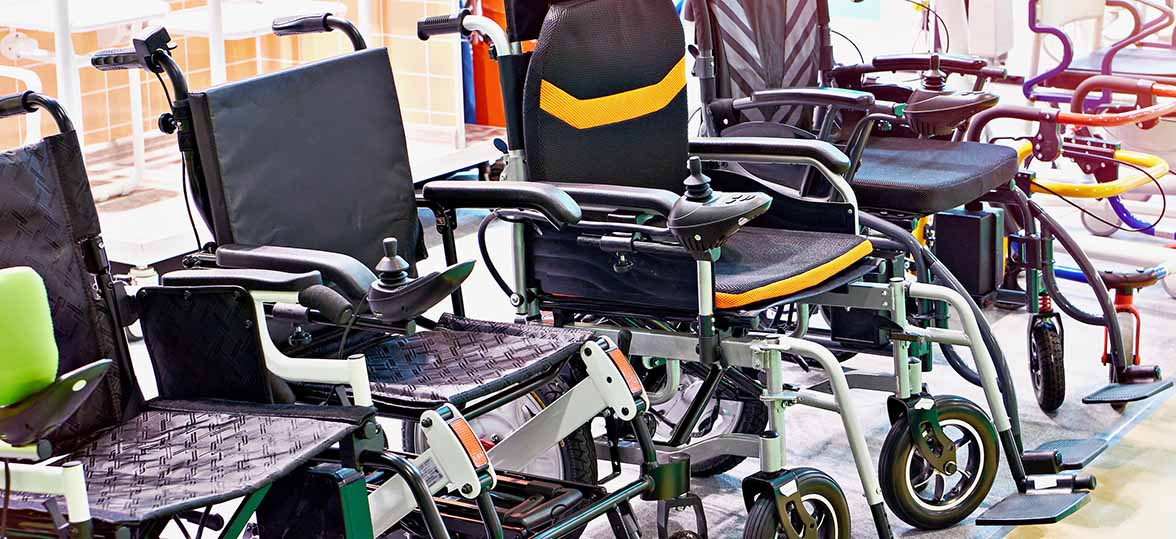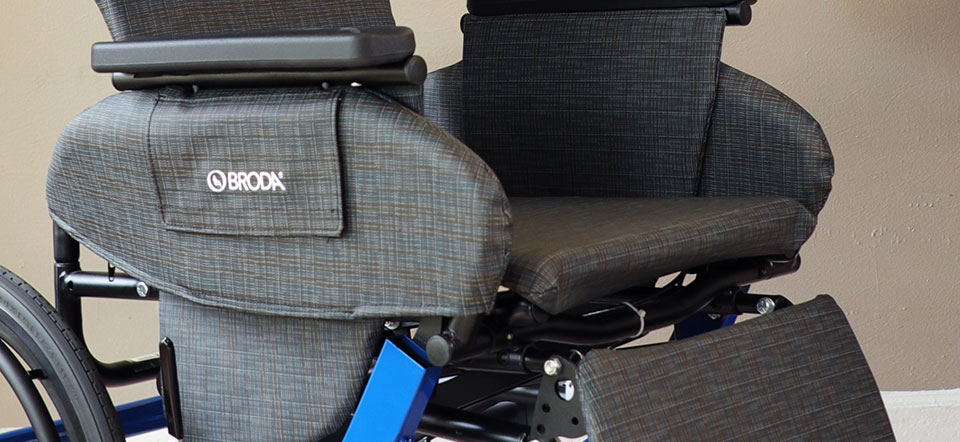The recent period of inactivity and isolation has been unprecedented, causing ripple effects across our communities. Especially overlooked were senior citizens and long-term care residents – already a vulnerable population. Mobilization and specialized seating solutions can create a more comfortable environment for our seniors.
our communities. Especially overlooked were senior citizens and long-term care residents – already a vulnerable population. Mobilization and specialized seating solutions can create a more comfortable environment for our seniors.
As the threat of infectious disease diminishes and the world re-opens, it is more important than ever to get reacquainted with our social environments.
Remobilization: Time for Mobilization
Unquestionably, it’s essential for the human body to maintain physical movement. In the long run, extended periods of sedentary time can lower a person’s quality of life. This is especially true for senior living residents and for those in long-term care, who often rely on assistive devices and caregivers to remain mobile.
Activities such as socializing, enjoying one’s environment, and performing daily activities are key markers for an individual’s quality of life. On the other hand, being permanently bed-bound or furniture-bound creates a state of inactivity that is detrimental to one’s physical and mental health.
A study found that on average, older, hospitalized patients spent most of their time lying in bed, despite an ability to walk independently.1 Those who are confined to seating or beds for extended periods experience common, compounding effects such as frailty and falls.1-5 Furthermore, this can be exacerbated with psychological effects caused by the spiral of physical degeneration. While in a sedentary care setting, individuals become discouraged at their declining ability to perform basic functions such as mobilization.
The Positive Effects of Mobilization
On the positive side, the benefits of mobilization are undeniable. The ability to ambulate or self-propel, even with the help of assisted devices such as walkers, rollators, or manual wheelchairs, can make a significant impact. Getting out of bed on one’s own, or via an assisted transfer from a caregiver, opens a healthy world of possibility. The basics activities of daily living (ADLs) – the benchmark for quality of life – become attainable. With the right mobility assistance, individuals can participate in ADLs such as personal hygiene, bathing / showering, dressing, eating, toileting, and transferring to and from beds or seats.
Being up out of bed is the first step in living a full life, even if it takes a little bit of assistance. Quality mobilization equipment not only gives the user enhanced independence but also reduces the burden on caregivers. Patients who did not use any assistive devices required an average of four additional hours of personal care per week, compared to individuals who did employ the devices.6
Choosing the Right Mobilization Solution
Most importantly, when you are choosing a mobility device, ensure that the equipment is prescribed and evaluated by a professional. A qualified clinician will understand the importance of using durable equipment that fits the user’s unique needs. Any mismatch between the true needs and the equipment’s capabilities can not only lead to a setback in mobility, but can also cause poor posture, pain, fatigue, pressure injuries, or falls.7-9
Another key point to a high quality of life is to help those with limited mobility to venture out of their homes and care facilities, expanding their access to the greater world. When leaving a care facility or home in a wheelchair or mobility device, it is important to make sure that the equipment is properly configured for the rugged outdoors. Essential features include proper wheels, a durable frame, and ergonomic propulsion. These, among other factors, maintain safe mobility over bumpy sidewalks, curbs, streets, and ramps. If the equipment is not geared for the task, then small obstacles can become insurmountable barriers. Furthermore, the wrong mobilization equipment puts the user or their caregivers at risk for strain or injury.
Wheelchair Transportation Safety
In the same way, traveling in a motor vehicle without safe seating can also be a hazard. In this situation, wheelchair users need to ensure that the van or bus is wheelchair accessible and that the transport operators are properly trained. Firstly, the user will need to be able to get into the vehicle safely with their wheelchair. Next, the wheelchair itself needs to be transportation compliant and able to be properly secured. The Wheelchair Transportation Safety Standards set by the University of Michigan Transportation Research Institute (UMTRI) are leading the way in ensuring proper safety. Wheelchairs and their securements adherent to this standard are rigorously crash tested to confirm that the wheelchair occupant is as safe as the other riders. To summarize, a list of WTS approved wheelchairs and securements can be found here on the UMTRI site.
Whether a patient has a chronic illness, is in rehabilitation for an injury, or is recovering from a procedure, maintaining mobility is critical. Physical activity promotes benefits such as circulation, heart health, mental wellbeing, and more. As a matter of fact, these benefits can improve patient outcomes, shrink recovery time, and reduce the overall costs of treatment. Maintaining mobility can also reduce inflammation and oxidative damage, which can speed wound healing.10-11
Resocialization: Time to Reconnect
During the COVID-19 pandemic, there have been many heartbreaking stories of seniors being isolated from their friends and families for extended periods. As a result, the critical role of social integrations in achieving mental and physical health has been brought to light.
Even before the pandemic, almost a quarter of individuals over 65 years old are considered socially isolated.12 The prevalence of isolation and severe loneliness living in long-term care facilities is at least double that of those living independently in our communities.13 Social isolation has detrimental consequences. It increases the risk of depression, suicide, anxiety, aggression, dementia, stroke, obesity, elevated blood pressure, and mortality.12, 14 Most of these long-term care facilities are remotely located, which exacerbates these risks, making it difficult for residents to stay socially connected to friends and family.15
How Can Caregivers Address Isolation Issues?
Caregivers and long-term care facilities should take many steps to engage seniors in activities of daily living (ADLs) and other extracurricular activities. First, caregivers must consider expanding the opportunities for mobility and physical engagement. Are your residents confined to uncomfortable seating for most of the day? Do they spend most of the day in bed, separated from others? If you answer “yes” to either of these questions, then consider that your patients are missing crucial health benefits and are lacking mental and physical stimulation. It’s important to realize that the proper mobility and seating equipment can make a world of difference in a senior’s quality of life.
The proper equipment not only improves mental health, but also increases comfort during daily living activities as well. Without proper, ergonomic seating, simple activities like brushing teeth, sitting upright long enough for a meal, going to the restroom, or taking a bath can be challenging. Ergonomics supports proper posture and safe mobility. Furthermore, it helps the user engage with people and the environment eye to eye.
Finding the Right Mobilization Equipment
A positioning device is an excellent solution to help the wheelchair user feel more comfortable while seated. Decision makers should be aware, however, that not all positioning chairs are created equally. Some tilting, reclining, or positioning devices prevent occupants from self-propelling. Some even force the occupant to look at the ceiling, instead of straight ahead.
Given these points, a positioning chair from Broda can help these individuals regain their comfort, mobility, and social engagement. The right seating also gives the occupant independence and dignity, along with physical and mental engagement.
Finding the Right Solutions: Broda Chairs & Wheelchairs
 When using mobility solutions from Broda, seniors in long-term care can engage with their neighbors and friends. We design our wheelchairs in the hope that they will allow people to engage in the facility-run activities and communicate their other health symptoms better to caregivers. Our selection of top-quality wheelchairs make it easier than ever before to ensure that your patients are physically, mentally, and socially stimulated, allowing for a wide range of improved health outcomes.
When using mobility solutions from Broda, seniors in long-term care can engage with their neighbors and friends. We design our wheelchairs in the hope that they will allow people to engage in the facility-run activities and communicate their other health symptoms better to caregivers. Our selection of top-quality wheelchairs make it easier than ever before to ensure that your patients are physically, mentally, and socially stimulated, allowing for a wide range of improved health outcomes.
As the world “goes back to normal” for seniors and those in long-term care, the issues of mobility and social isolation are not going away. On the contrary, both mobility and social isolation are ongoing challenges that must be regularly addressed. Whether you are a caregiver, a long-term care facility leader, a loved one, or a member of the community, it’s our responsibility to make sure they our seniors receive the best seating and mobility equipment available. In spite of the challenges, let’s help seniors stay comfortable and improve their quality of life. To that end, Broda is fighting against the stigma and negative effects of social isolation and diminished mobility.
References
- Brown, C.J., Redden, D.T., Flood, K.L. and Allman, R.M. (2009), The Underrecognized Epidemic of Low Mobility During Hospitalization of Older Adults. Journal of the American Geriatrics Society, 57: 1660-1665. https://doi.org/10.1111/j.1532-2009.02393.x
- Brown C. J., Roth D. L., Allman R. M. (2008). Validation of use of wireless monitors to measure levels of mobility during hospitalization. Journal of Rehabilitation Research & Development, 45, 551-558. doi:10.1682/jjrd.2007.06.0086 [PubMed] [Google Scholar]
- Brown C. J., Roth D. L., Allman R. M., Sawyer P., Ritchie C. S., Roseman J. M. (2009). Trajectories of life-space mobility after hospitalization. Annals of Internal Medicine, 150, 372-378. [PMC free article] [PubMed] [Google Scholar]
- Bummel N. E., Girard T. D., Ely E. W., Pahdharipande P. P., Morandi A., Hughes C. G., . . . Jackson J. C. (2014). Feasibility and safety of early combined cognitive and physical therapy for critically ill medical and surgical patients: The Activity and Cognitive Therapy in ICU (ACT-ICU) trial. Intensive Care Medicine, 40, 370-379. doi:10.1007/s00134-013-3136-0 [PMC free article] [PubMed] [Google Scholar]
- Catchpole K. (2013). Spreading human factors expertise in healthcare: Untangling the knots in people and systems. BMJ Quality & Safety, 22, 793-797. doi:10.1136/bmjqs-2013-002036 [PubMed] [Google Scholar]
- Hoenig H, Taylor DH, Jr., Sloan FA. Does assistive technology substitute for personal assistance among the disabled elderly? Am J Public Health. 2003;93(2):330–7. [PMC free article][PubMed] [Google Scholar]
- Rader J, Jones D, Miller L. The importance of individualized wheelchair seating for frail older adults. J Gerontol Nurs. 2000;26(11):24–32. quiz 46-7. [PubMed] [Google Scholar]
- Trefler E, et al. Outcomes of Wheelchair Systems Intervention With Residents of Long-Term Care Facilities. Assistive Technology. 2004;16(1):18–27. [PubMed] [Google Scholar]
- Hoenig H. Assistive technology and mobility aids for the older patient with disability. Annals of Long Term Care. 2004;12:12–19. [Google Scholar]
- Keylock K, Young H. Delayed wound healing: can exercise accelerate it?. Int J Exerc Sci. 2010;3(3):70–8.
- Craft LL, Perna FM. The benefits of exercise for the clinically depressed. Prim Care Companion J Clin Psychiatry. 2004;6(3):104–11.
- Blazer D.G. The health and medical dimensions of social isolation and loneliness in older adults. https://www.nationalacademies.org/our-work/the-health-and-medical-dimensions-of-social-isolation-and-loneliness-in-older-adultsAvailable at: Accessed May 22, 2020.
- Victor C.R. Loneliness in care homes: A neglected area of research? Aging Health. 2012;8:637–646. [Google Scholar]
- Cacioppo S., Grippo A.J., London S. Loneliness: Clinical imports and interventions. Perspect Psychol Sci. 2015;10:238–249. [PMC free article][PubMed] [Google Scholar]
- Park C, Kim D, Briesacher BA. Association of Social Isolation of Long-term Care Facilities in the United States With 30-Day Mortality. JAMA Netw Open. 2021;4(6):e2113361. doi:10.1001/jamanetworkopen.2021.13361



